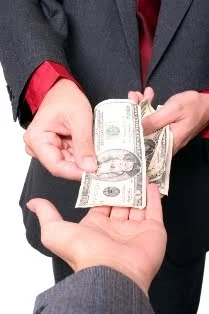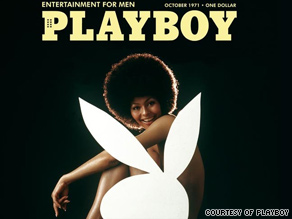
Did you know that Avon is the #1 Multi Level Marketing Company?

 12 Ways to Make Money on the Internet?
12 Ways to Make Money on the Internet? I’ve been doing a bit of digging through my bookmarks in my Google Chrome web browser, and I’ve noticed that I’ve bookmarked about twenty resourceful links to help monetize a website in particular, and I thought to my self, why not make a blog post out of it? Sure why not. So, out of that twenty sites that I bookmarked, I picked 11 I thought were important and so, I would like to share.
Try each method one after another. If you find one that you can try it for free first can help determine if it fits your personal needs, simply continue doing it, and you could be making money online instantly. Experienced any one of these programs listed above? Share your stories and your experiences with us. We enjoy hearing them!

 Making money online used to pretty much require you to have your own Web site, products to sell and some marketing savvy. But a new generation of dot-coms have arisen that will pay you for what you know and who you know without you having to be a web designer or a marketing genius.
Making money online used to pretty much require you to have your own Web site, products to sell and some marketing savvy. But a new generation of dot-coms have arisen that will pay you for what you know and who you know without you having to be a web designer or a marketing genius.But it's hard to tell hype from the real deal. I did a search on "make money online" and "making money online", and much of the information out there is just promoting various infoproducts, mostly about Internet marketing. I see why people sometimes ask, "Is anyone making money online besides Internet marketing experts?"
So I put together a list of business opportunities with legitimate companies that:
Help friends find better jobs.
Sites like ReferEarns, Zyoin, Who Do You Know For Dough?, Bohire and WiseStepp connect employers with prospective employees, many of whom are already employed and not actively job-hunting, via networking - the people who know these qualified candidates. Rewards for referring a candidate who gets hired range from $50 on up to several thousand dollars - not chump change. If you know a lot of job-seekers (and who doesn't these days?), this is a great way to break into the recruiting business with no overhead.
Connect suppliers with buyers.
Referral fees are a common practice in business, but they haven't been used much in online networking sites because there was no way to track them. Sites like Salesconx, InnerSell and uRefer now provide that. Vendors set the referral fees they're willing to pay (and for what), and when the transaction happens, you get paid. uRefer also allows merchants to set up referral programs for introductions and meetings, as well as transactions.
Write.
A growing number of sites will pay for your articles or blog posts. Associated Content and Helium will "pay for performance" based on page views for just about anything you want to write about. Articles on specific topics they're looking for can earn direct payments up to about $200. The rates are probably low for established writers, but if you're trying to break into the field and have time on your hands, they're a great way to start. Also, a lot of companies are looking for part-time bloggers. They may pay per post or on a steady contract. Our Weblogs Guide posts blogging jobs weekly in the forum.
Start your own blog.
You don't have to have your own Web site, or install blogging software, or even figure out how to set up the advertising. At Blogger you can set up a blog for free in less than five minutes without knowing a thing about web design, and Blogger even automates setting up Google AdSense so you can make money off your blog by displaying ads and getting paid when people click on the ads. To make even more money from it, set up an affiliate program (see below) for books, music, etc., and insert your affiliate links whenever you refer to those items. You'll have to get a lot of traffic to become a six-figure blogger, but pick an interesting topic, write well, tell all your friends, and you're off to a good start.
Related: Monetizing Your Blog
Create topical resource hubs.
Are you an expert on a particular niche topic? Can you put together an overview of the topic and assemble some of the best resources on the topic from around the web? Then you can create topical hubs and get paid through sites like Squidoo, HugPages and Google Knol. Payments are based on a combination of ad revenue and affiliate fees. You'll get higher rates doing it on your own, but these sites have a built-in supply of traffic and tools to make content creation easier.
Advertise other people's products.
If you already have a Web site or a blog, look for vendors that offer related but non-competing products and see if they have an affiliate program. Stick to familiar products and brands - they're easier to sell. To promote those products:
Related: How to Really Make Money on the Internet With an Amazon.com Affiliate Site
Microstock photography.
You don't have to be a professional photographer to sell your photos for money. People are constantly in need of stock photography for websites, presentations, brochures and so on, and are willing to pay for the right image. People generally search for images on stock photography sites by keywords, not by photographer, so you have the same chance as anyone else of having your image picked. Just be careful that you don't have images of trademarked brands, copyrighted art or people's faces that are readily identifiable (unless you have a model release), but just about anything else is fair game, and I promise - you'd be amazed what people need pictures of, so don't make any assumptions. If it's a decent photo, upload it. Some sites to get you started include Fotolia, ShutterStock, Dreamstime and iStockphoto. The great thing about this is that it's truly "set it and forget it".
The above list is by no means comprehensive, but it highlights some of the new and interesting ways to make money online without investing any money, without having a product of your own, and without having expert sales and marketing skills. Most of all, unlike taking surveys or getting paid to read e-mail, the potential return on your time investment is substantial. DID YOU KNOW THESE DOMESTIC VIOLENCE FACTS ?
DID YOU KNOW THESE DOMESTIC VIOLENCE FACTS ? 

Marge Simpson will appear in the November issue of Playboy as the magazine's first cartoon cover model.
Like nearly everything printed on paper these days, Playboy magazine has been facing tough times. Advertising pages have dropped 31 percent over the last year, newsstand sales have dried up by 25 percent, and its circulation has dipped to 2.4 million, according to publishing insider Media Industry Newsletter.
Can a blue-haired mother of three deliver the iconic gentleman's book to a new generation?
Part commemoration of "The Simpsons'" 20th anniversary, part nod to the golden days of Playboy, what has become known as "The Marge Simpson Cover" has drummed up more attention for Playboy than the premiere of the original "Girls Next Door." But it remains to be seen whether the animated move can open the wallets of a younger generation.
"The shock value always does Playboy very good," said Media Industry Newsletter online editor-in-chief Steve Cohn. "This is a novelty one, but it's no different than a celebrity. In a sense, Marge has something in common with a woman who's never done it before, someone like Nancy Sinatra."
But it's not exactly shock value Playboy is going for -- more like "hip, cool" and the kind of magazine a 25-year-old would read. Maxim, a "lad mag" with an average reader of 29, also ran a cover of Marge Simpson in 2004, depicting the d'oh-eyed beauty in a sheer dress on all fours, scrubbing the floor.
"We knew Marge's pictorial would appeal to a large demographic," said Playboy editorial director Jimmy Jellinek. "This cover and pictorial is just another example of how we're evolving our editorial content to continue to reach men in their 20s, and also maintain the elements of the magazine that have attracted readers for more than 50 years."
The three-page pictorial, featuring a scantily-clad Marge in cartoon lingerie, was "obviously tongue-in-cheek," new Playboy CEO Scott Flanders told the Chicago Sun-Times. "It had never been done, and we thought it would be hip, cool and unusual."
Playboy's use of "hip" isn't the only thing retro-cool -- the cover is a clear nod to the empire's peak in the 1970s. Marge's now infamous image, itself considered to be groundbreaking as the first cartoon character to land a Playboy cover, was inspired by another bunny-eared milestone: The October 1971 issue featured Darine Stern, the first black woman to pose on a Playboy cover.

Darine Stern's picture on the October 1971 cover served as the inspiration for Playboy's November 2009 cover.
"We decided to re-create [it] because it's one of our most iconic covers," Jellinek said, "and because Marge's sexy blue beehive immediately made us think of Darine Stern, whose beautiful, voluminous hairdo was front and center on the October 1971 cover."
For Hefner, "Marge Simpson is the quintessential girl next door who stole our hearts 20 years ago and has held them captive ever since. We were delighted to learn she wanted to grace the pages of our magazine. Her pictorial is truly stunning," he told CNN.
This move comes on the heels of a disappointing first half of 2009, during which Playboy lost some attention from the demographic it does have -- the average reader is a 35-year-old male. The magazine came in 200,000 short of its 2.6 million rate base -- the minimum circulation a magazine promises to advertisers -- according to BusinessWeek.
Playboy's lackluster showing as of late can be attributed to two things, Cohn said. One, the audience transferred some of their desire for tastefully disrobed women to the Web. Second, Hugh Hefner got old.
"The reason for their audience shift can be seen in Hugh Hefner. I went to college in the '70s and Hefner was in his 40s back then. He was the symbol for what kind of guy I wanted to be," Cohn said. "Now he's in his 80s -- it's hard to identify with someone like that. That's a problem for Playboy."
But, Jellinek said, "Playboy is a state of mind and a way of being, not a pre-prescribed age. We knew this was something that all of our readers would enjoy, because the show has been on for 20 years and it resonates with adults of all ages."
The "Simpson"-ized Playboy will be available at newsstands Friday.
 Kanye West
Kanye West  was nominated 12 times in 1983 and
was nominated 12 times in 1983 and  Milli Vanilli was the first artist to be stripped of their Grammy award for Best New Artist when it was discovered that it was not actually them singing on their album?
Milli Vanilli was the first artist to be stripped of their Grammy award for Best New Artist when it was discovered that it was not actually them singing on their album?
 1960 Peace Prize;
1960 Peace Prize; Martin Luther King Jr., 1964 Peace Prize;
Martin Luther King Jr., 1964 Peace Prize; Sir William Arthur Lewis, 1979 Economics Prize;
Sir William Arthur Lewis, 1979 Economics Prize; Bishop Desmond Tutu, 1984 Peace Prize;
Bishop Desmond Tutu, 1984 Peace Prize; Wole Soyinka, 1986 Literature Prize;
Wole Soyinka, 1986 Literature Prize; Derek Walcott, 1992 Literature Prize;
Derek Walcott, 1992 Literature Prize;
 Nelson Mandela 1993 Peace Prize,
Nelson Mandela 1993 Peace Prize, Kofi Annan 2001 Peace Prize and
Kofi Annan 2001 Peace Prize and Wangari Maathai, 2004.”
Wangari Maathai, 2004.”